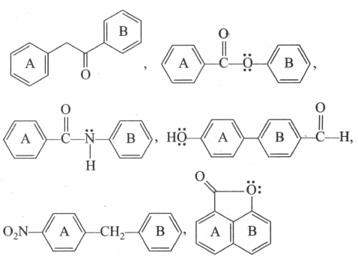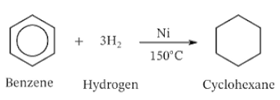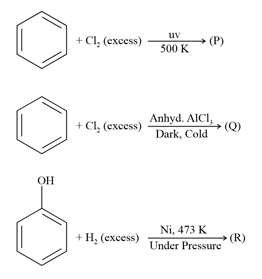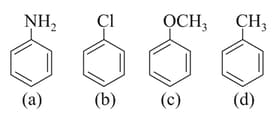Chemical Properties of Aromatic Hydrocarbons
Chemical Properties of Aromatic Hydrocarbons: Overview
This topic covers concepts such as Chemical Properties of Benzene, Electrophilic Substitution Reactions of Benzene, Nitration of Benzene, Halogenation of Benzene, Sulphonation of Benzene, Friedel-Crafts Alkylation Reaction of Benzene, etc.
Important Questions on Chemical Properties of Aromatic Hydrocarbons
The structure of the major organic product expected form the following reaction are

Each of the compounds shown below has two aromatic rings, labelled as and . Identify number of compounds in which ring is more active than ring for electrophilic aromatic substitution reaction.

The Birch reduction of benzoic acid gives

Identify the type of organic reaction shown in the above equation.
Identify the reagent used to convert benzene into hexachlorobenzene in the presence of anhydrous .
Identify the product of the reaction, .
Write the reaction of benzene with excess of chlorine in the presence of anhydrous .
Identify the products formed from the following reactions:

The base is used for the deprotonation of arenium ion.
Sulphonation in benzene is an example for electrophilic substitution reaction.
Write the deprotonation reaction of arenium ion.
Write a note on the intermediate of the electrophilic substitution of benzene.
In halogenation, the deprotonation of arenium ion produces the aryl halide. The catalyst used in this bromination of benzene is _____.
In alkylation of benzene, the electrophile is . can be _____:
"Enter the correct answer as or ."
Which of the following effect is not observed in deprotonation of arenium ion?
Which of the following is not an electrophilic substitution reaction?
Why nucleophile does not react with the intermediate of the electrophilic substitution?
How does the arenium ion formed?
The increasing order of nitration in the acidic medium of the following compounds is

The compound that does not give haloderivative by the addition of .
